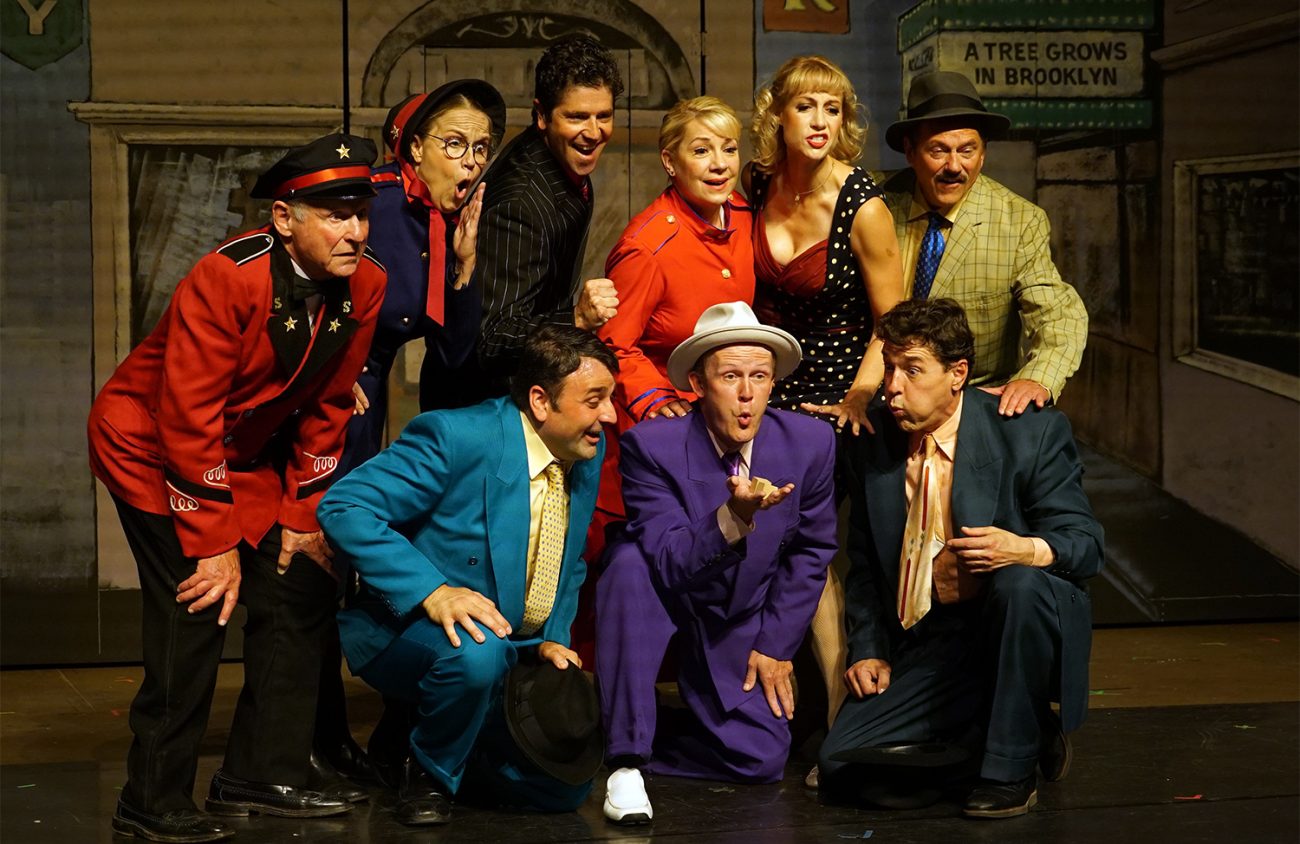Guys and Dolls is an ass-backward classic. Instead of starting with a great story and setting it to music, a pair of producers engaged a writer to cobble together a plot based on a series of short stories by Damon Runyan. One of America’s most famous writers of the 1920s and ’30s, he was best known for capturing the colorful characters and slanguage of New York’s gamblers, gangsters and other hustlers. When the star actress didn’t work for the role they originally cast her in, they created a new character just for her.
Instead of hiring a well-known theater composer, the producers chose Frank Loesser, best known for movie musical lyrics. He wrote a slew of songs based on a book that was then promptly discarded. So a new writer (Abe Burrows) had to quickly contrive a new story based on Loesser’s existing songs, instead of the other way around as usual — which wound up making the songs fit the story much better than most prior musicals.
That convoluted tale chronicles the adventures of a trio of petty gamblers who need a spot to continue “the oldest established permanent floating crap game in New York.” To get the money to rent the space, one of them, Nathan Detroit, makes a wager involving a Cuban escapade and a Salvation Army sergeant who needs sinners to keep her mission open.
Meanwhile, his long-suffering nightclub singer fiancée wants Nathan to give up the gambling life, a nosy cop wants to stop the game, a tough gangster arrives from Chicago … like I said, contrived. And of course — spoiler! — everyone gets what they want in the end.
Somehow, in spite of so many carts preceding all those horses, Guys and Dolls turned out to be one of the great success stories in American musical theater, earning unanimous critical raves, running for 1,200 performances in its first production, scoring five 1951 Tony Awards (and more in subsequent revivals) and being cheated of the Pulitzer Prize for Drama only by right-wing, red-baiting McCarthyism.
Revived often on Broadway (most recently in 2009) and everywhere else, it was turned into a movie with Brando and Sinatra, a period piece at its debut, the musical’s spirited combination of catchy tunes (“Luck Be a Lady,” “If I Were a Bell,” “Sit Down, You’re Rocking the Boat,” “Fugue for Tinhorns,” better known by its chorus, “Can do, can do,” and more), sly humor and just enough street grit to avoid over-sentimentality make it a popular perennial.
Directed by Peg Major and conducted by Robert Ashens, The Shedd’s July 20-29 production stars Shirley Andress as Salvation Army Sgt. Sarah Brown and Ron Daum as the gambler Nathan Detroit, with live orchestra and plenty of singing, dancing and dizzy delight.
Although they both involve redemption for sinners, there’s little else in common between Guys and Dolls and the other big musical theater work onstage this month, which happens at the Hult Center’s Silva Hall this Sunday night, July 15. Felix Mendelssohn’s devout 1846 oratorio Elijah, the closing choral-orchestral work in this year’s Oregon Bach Festival (the other two major final shows are sold out) puts a German Romantic spin on the Baroque oratorios by Bach and Handel that Mendelssohn so cherished. After all that Victorian piety is over, you’ll be relieved to join the company of Runyan’s cheerfully corrupt crew next week.
Guys and Dolls runs July 20-29 at The Shedd, tickets $18.25-$38 at theshedd.org.
